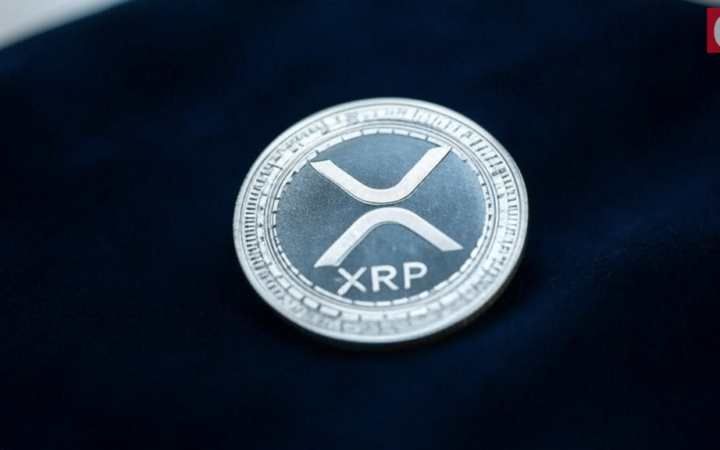
Please check out latest news, expert comments and industry insights from Coinspeaker's contributors.
With Ethereum’s landscape evolving towards a PoS framework, it’s critical for those invested in the ecosystem to gear up for the impending changes.
 Edited by Julia Sakovich
Updated
5 mins read
Edited by Julia Sakovich
Updated
5 mins read

As a beacon of blockchain technology, Ethereum continues to pave the path for digital innovation. The platform’s recent transition from the traditional proof of work (PoW) to the eco-friendlier proof of stake (PoS) consensus algorithm has captured the attention of tech enthusiasts worldwide. This significant move is more than just an upgrade; it’s a fundamental change signaling a new direction for Ethereum. In this discussion, we will explore the intricacies of Ethereum’s PoS mechanism and its significance for the digital ledger world.
Proof of stake stands as an innovative protocol used by blockchain networks to realize a decentralized agreement. It represents a departure from the proof of work schema, which is known for its heavy electrical demands to unravel intricate mathematical challenges.
PoS can be likened to a digital form of democracy in which the chance to verify transactions and forge new blocks in the blockchain is tied to the size of an individual’s stake in the network. Ethereum enthusiasts can engage in staking by allocating some of their ether (ETH) as a stake, which acts as a form of collateral ensuring the legitimacy of the transaction verification process.
Within the Ethereum blockchain, the proof of stake model hinges on the critical role of validators. These individuals commit a certain amount of their ether to enable the validating software. As validators, their duties encompass the preservation of data, execution of transaction processes, and the integration of new blocks into the blockchain.
The protocol selects validators to suggest and endorse the forthcoming block based on a specific algorithm. This algorithm assesses both the magnitude of the validator’s staked ether and the duration for which it has been staked. Such a method ensures the robustness of the network and aligns the validators’ interests with the ongoing integrity and dependability of the Ethereum blockchain.
Ethereum’s migration to a proof-of-stake model is anticipated to yield numerous benefits. The most notable is the significant decrease in the network’s energy demand, contributing to a more sustainable and eco-conscious digital infrastructure.
This method also fortifies network security, imposing a higher financial barrier for any malicious entities considering an attack, given the necessity of possessing a large quantity of ETH. Additionally, the enhancement of the network’s scalability is foreseen, with an increased throughput of transactions at reduced expenses, facilitating a wider and more efficient adoption of Ethereum.
The shift towards proof of stake promises much, yet it navigates a landscape rife with challenges. A notable concern is the potential for increased centralization; entities with larger stakes might wield undue influence within the network. To counteract this, Ethereum has integrated specific countermeasures, such as the ‘slashing’ mechanism, which serves as a deterrent by confiscating a part of the stake from validators who act against the network’s rules.
Aware of the ‘Nothing at Stake’ dilemma, where validators may be tempted to confirm multiple versions of the blockchain to reap more rewards, Ethereum’s development team has crafted strategic responses. One such response is the introduction of the ‘casper’ protocol, Ethereum’s PoS algorithm, which imposes penalties for any forms of deceitful actions by validators, thereby aligning their activities with the network’s collective well-being.
Ethereum’s journey towards fully adopting proof of stake is ongoing, marked by extensive testing across multiple testnets to affirm its effectiveness. A key development in this process is the beacon chain, a separate PoS-based blockchain that operates in parallel with the current PoW chain. This serves as an initial foray into a future governed by PoS. Such test environments are critical for they allow the network to undergo rigorous validations, confirming the system’s resilience in anticipation of a comprehensive transition.
In this evolving landscape, platforms like https://klever.io/en-us play a crucial role. They offer users the tools and services necessary to engage with Ethereum’s new mechanism, whether it’s for staking purposes, learning resources, or community engagement. Such platforms will be instrumental in bridging the gap between the complexities of blockchain technology and the average user, empowering more people to participate in the Ethereum network.
With Ethereum’s landscape evolving towards a PoS framework, it’s critical for those invested in the ecosystem to gear up for the impending changes. Miners are faced with the task of exploring new avenues for income, such as shifting to staking mechanisms. Prospective validators holding Ethereum must acquaint themselves with the staking prerequisites and adhere to established protocols to ensure a seamless switch and optimize their potential benefits.
Engagement with ongoing updates, like the Ethereum improvement proposals (EIPs), active participation in online forums, and keeping pace with trustworthy cryptocurrency news sources are strategic ways for individuals to remain informed. As the move to PoS nears, being well-informed and actively involved in the community becomes ever more vital for participants within the Ethereum network.
Ethereum’s shift to a proof-of-stake consensus mechanism marks a significant milestone in the blockchain’s evolution. It promises enhanced security, scalability, and sustainability, which could catalyze further innovation and adoption. However, this transition also brings challenges that must be carefully navigated. As we stand on the precipice of this change, the collective efforts of developers, validators, and the community will be pivotal in shaping the future of Ethereum.
Disclaimer: Coinspeaker is committed to providing unbiased and transparent reporting. This article aims to deliver accurate and timely information but should not be taken as financial or investment advice. Since market conditions can change rapidly, we encourage you to verify information on your own and consult with a professional before making any decisions based on this content.

Please check out latest news, expert comments and industry insights from Coinspeaker's contributors.





